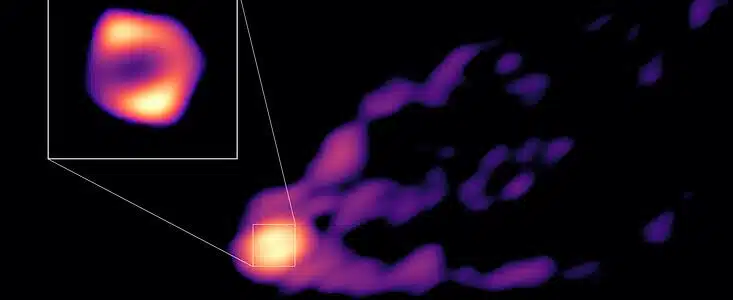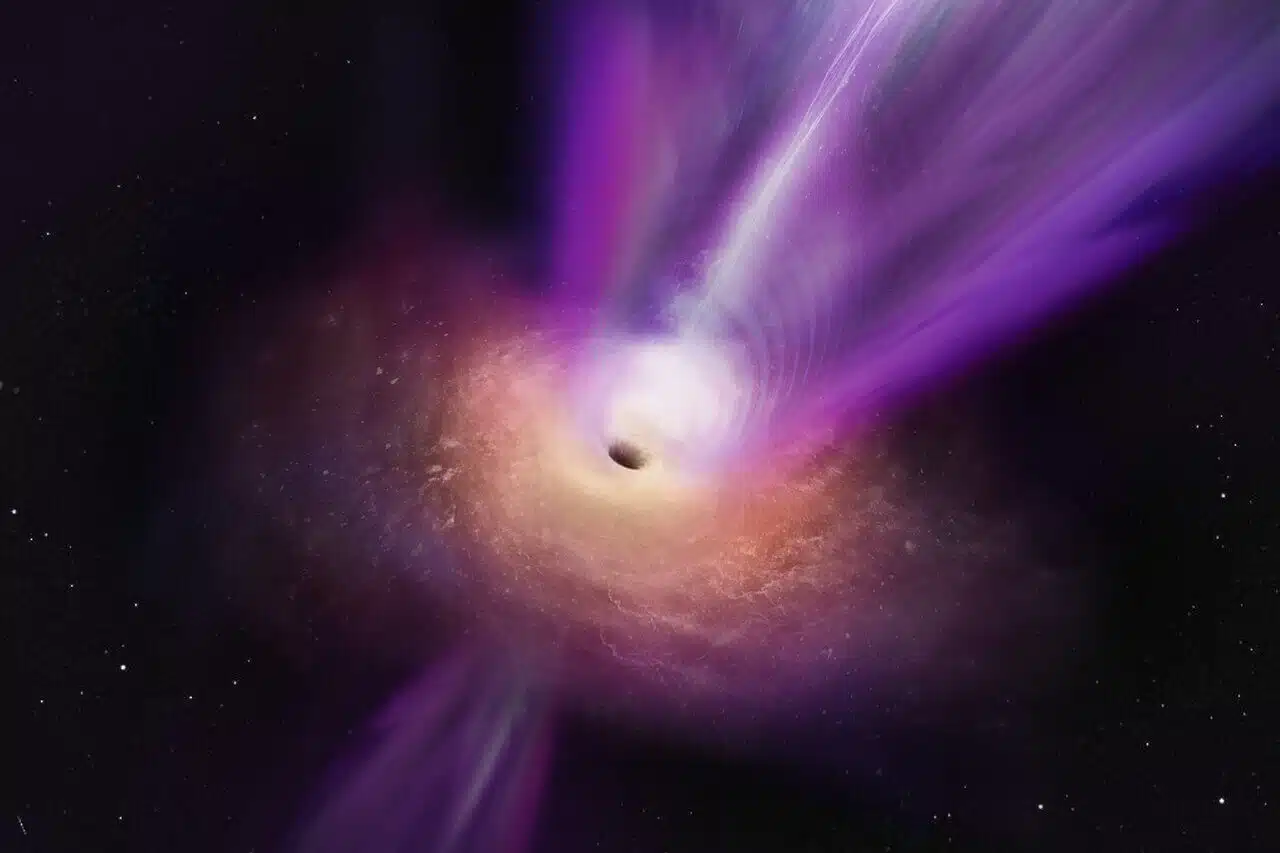In a recent paper published in the journal Nature, scientists analyzed new data from the Event Horizon Telescope (EHT) to produce the most detailed image yet of the supermassive black hole at the center of the galaxy M87

In a recent paper published in the journal Nature, scientists analyzed new data from the Event Horizon Telescope (EHT) to produce the most detailed image yet of the supermassive black hole at the center of the galaxy M87. The image revealed a turbulent environment around the black hole, with bright jets of plasma emanating from the center of the black hole and swirling eddies of gas and dust swirling around it.
The new image of the black hole at the center of M87 More detailed than previous pictures, and reveals new properties and structures in the environment around the black hole. The bright plasma jets emanating from the center of the black hole are apparently produced by a process called magnetic fusion, where magnetic fields around the black hole are distorted and compressed, releasing a burst of energy.
The turbulent movements of gas and dust around the black hole are also of great interest to scientists, as they can provide clues to the formation of galaxies and their evolution. The explanation is that the gas and dust swirling around the black hole is in the form of a disk, known as an accretion disk, that feeds material into the black hole. The turbulent motions of the disk can cause the material to heat up and emit radiation, which can be detected by telescopes.

The new image also provides insights into the properties of black holes themselves. Black holes are objects with such strong gravitational fields that nothing, not even light, can escape them. The boundary around a black hole from which nothing can escape is called the event horizon. The new image reveals the shape and size of the event horizon of the black hole at the center of M87, confirming the predictions of general relativity.
The observations were made in 2018 using telescopes from the Global Millimeter Array VLBI (GMVA), the Large Millimeter/Submillimeter Array Atacama (ALMA), in which ESO participates, and the Greenland Telescope (GLT).fl This created a network of radio telescopes around the world working together as a virtual telescope the size of the Earth. Such a large mesh can distinguish very small details in the region around the M87 black hole.
Thanks to this new image, astronomers can better understand how black holes can launch such energetic jets.
Most galaxies contain a supermassive black hole at their center. While black holes are known to gobble up matter in their immediate vicinity, they can also launch powerful jets of matter that go beyond the realm of the galaxies in which they reside. Understanding how black holes create such massive jets is a long-standing problem in astronomy. "We know that jets are emitted from the region around black holes," says Ruo-San Lu from the Shanghai Astronomical Observatory in China, "but we still don't fully understand how this happens in practice. To investigate this directly we must observe the source of the jet as close as possible to the black hole."
The new image published today shows for the first time exactly this: how the base of the jet connects to the material swirling around a supermassive black hole, with a mass 6.5 billion times greater than the Sun, which is at the center of the galaxy M87, located 55 million light years away from us. Previous observations were able to image the region near the black hole and the jet separately, but this is the first time the two features have been observed together. "This new image completes the picture by showing the region around the black hole and the jet at the same time," adds Jae-Young Kim of Kyungpook National University in South Korea and the Max Planck Institute for Radio Astronomy in Germany.
The new image shows the jet emerging near the black hole, as well as what scientists call the shadow of the black hole. As matter surrounds the black hole, it heats up and emits light. The black hole bends and captures some of this light, creating a ring-like structure around the black hole as seen from Earth. The darkness in the center of the ring is the shadow of the black hole, First imaged by the Event Horizon Telescope (EHT) in 2017. Both this new image and the EHT image combine data taken with several radio telescopes around the world, but the image released today shows radio light emitted at a longer wavelength than the EHT: 3.5 mm instead of 1.3 mm. "At this wavelength, we can see how the jet emerges from the ejection ring around the central supermassive black hole, ” says Thomas Krichbaum from the Max Planck Institute for Radio Astronomy.
The size of the ring observed by the GMVA network is about 50% larger compared to the Event Horizon Telescope image. "In order to To understand the physical origin of the larger and thicker ring, we had to use computer simulations to examine different scenarios." Keiichi Asada of the Academia Sinica in Taiwan explains. The results indicate that the new image reveals more of the material falling toward the black hole than could be seen with EHT.
Future observations with this network of telescopes will continue to unravel how supermassive black holes can launch powerful jets. "We plan to observe the region around the black hole at the center of M87 at different radio wavelengths to further study the jet emission", says Eduardo Ross from the Max Planck Institute for Radio Astronomy. Such simultaneous observations will allow the team to understand the complicated processes taking place near the supermassive black hole. "The next few years will be exciting as we learn more about what's going on near one of the most mysterious regions in the universeRoss concludes.
More of the topic in Hayadan:
- Why supermassive black holes keep growing at the centers of massive galaxies
- The James Webb Telescope sheds light on the evolution of galaxies and black holes in the Stefan quintet
- Astrophysicists predict the strength of gravitational waves from merging supermassive black holes
- Discovering dark matter: New clue from mysterious clouds around swirling black holes

7 תגובות
Plasma jets from,,,center!,,, the black hole.
If they were visible from the edge of the hole, I would hear
Plausible,
But from the center? It is interesting…
I read about it a year ago
Amazing. This is the first time. You know how much I searched for the turbulent environment near him.
there is who Who understands the spaces and such here? Space certified to function and explain to everyone about the super space. and green holes in the sky.
There is no limit to the inventions and lies of psychotic people….. Black holes are only in the mind of those who believe this nonsense!!!
There is a nice explanation on the YouTube channel of the astrophysicist Dr. Becky (in English):
https://www.youtube.com/watch?v=RF3P1W1vaYs
I read the original message - the article is accurate.
The scientific article appears as if only part of it is exposed free of charge. I looked in scholar, it's not there.